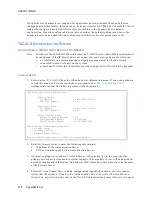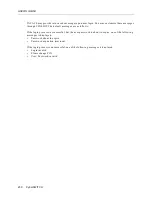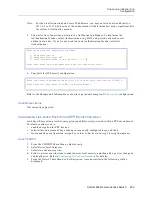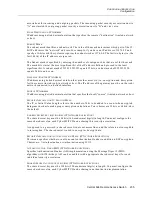
USER’S GUIDE
220 CyberSWITCH
ACE A
UTHENTICATION
S
ERVER
C
ONFIGURING
AN
ACE A
UTHENTICATION
S
ERVER
Note:
In order for the CyberSWITCH to reference an ACE server, the following configuration
steps must first be completed:
•
basic IP routing information must be configured for ACE
•
a LAN Network interface must be configured appropriately for the IP network
connected to each LAN port on the system
•
at least one WAN Network Interface must be configured for ACE to be operable
After ACE configuration but before attempting to access the ACE Server, both the ACE
Server and the CyberSWITCH need to agree upon a “secret.” After configuring the ACE
server on the CyberSWITCH, issue the
sentry ace
system command. This command will
establish the necessary secret for communications between the two systems.
U
SING
CFGEDIT
1.
Select option (4), ACE from the Off-node Server Information menu. If you need guidance to
find this menu, refer to the instructions provided in the
CSM Authentication Server
configuration section. The following screen will be displayed:
2.
Select Primary Server and enter the following information:
a.
IP address of the Authentication Server
b.
UDP port number used by the Authentication Server
3.
If your configuration includes an ACE Slave server, then select Secondary Server. Enter its IP
address. The UDP port number for the Master and Slave servers will be the same, regardless of
which server configuration screen from which it is entered.
4.
Select Miscellaneous Information to finish the configuration.
a.
Specify the number of access request retries that the system will send to the Authentication
Server.
ACE Authentication Server Menu:
Primary (Master) Server
is Not Configured
Secondary (Slave) Server
is Not Configured
Access Request
Number of Access Retries is 3
Time between Retries is 1 second
Encryption Method SDI
Source IP address is Not Configured
ACE Server Options:
1) Primary (Master) Server
2) Secondary (Slave) Server
3) Miscellaneous Information
4) Load ACE configuration file.
Select function from above or <RET> for previous menu:
1
















































